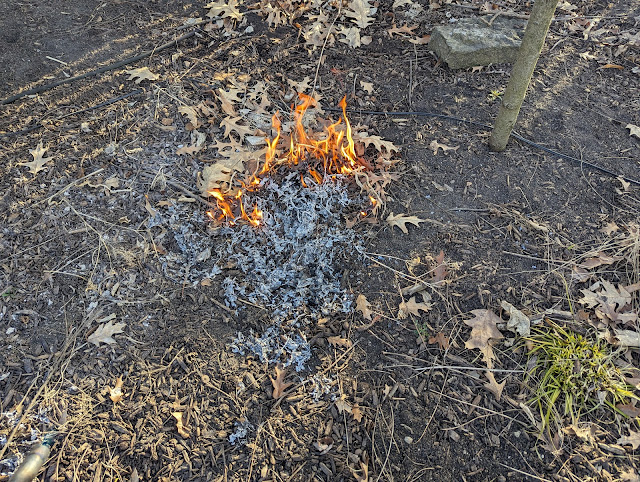Compost Bin Fire - Dry Material Burned in Late Winter - February 2024

I was feeling pretty good about my prescribed burning of tiny piles of leaves and some perennial litter from last season. I posted the details of it yesterday . Over the weekend, I went out and did a little bit more burning. I used my small hand rake to pull together a pile of (mostly) oak leaves - creating a little burn break from other leaf litter - and use my small propane torch to light-it-up. But, I think I got a little too cocky. Burning and burning and burning. And feeling good about returning the carbon to the soil via little ash piles. All the while...cleaning up the beds a bit. I was puttering around the beds making little piles and burning them. They light up, then expire on their own when they exhaust all the material. A little smoldering for a minute or two, then the piles of ash go dark. And leave behind some white, burned out material. I found myself back by the compost bins, where I recen...



